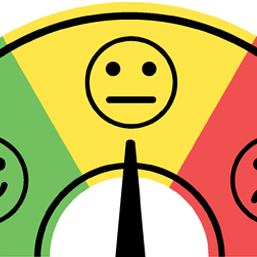
We’ve all been there: Your three-year-old has a meltdown in the middle of the grocery checkout line or you become beyond exasperated when your eldest clobbers your youngest for no apparent reason. Feelings. They push us to our limits. They’re big and at times, seem to come out of nowhere. We realize that we have difficulty managing our own emotions, so it’s easy to understand when our children have the same problem. Here are some strategies to help your children first identify their feelings, and then learn to manage their feelings in acceptable ways.
Name the emotions. It can be difficult for young children to understand what happens when they explode with emotions. They may not have the language to identify their feelings, they only know their feelings are big and have overcome them. In daily life, it’s helpful to clearly name feelings as they arise. For example, you can say to your child, “I see that it makes you angry when your brother knocks down your block tower.”
Another strategy is to find a simple feeling chart with visuals to help your children when they’re feeling happy, excited, sad, or angry. (Look online to find a free printable chart.) Then you can periodically ask your child, “How are you feeling? Show me on the feeling chart.”
Model expressing your feelings appropriately.
Make it a habit to tell your children how you’re feeling. Model appropriate ways to express that you’re upset or frustrated. You might say to your child, “I’m feeling sad that it’s time to go to school and you aren’t dressed yet.” Or, “It makes me very happy when you eat all of your breakfast.”
When everyone in your family has had a bad day, acknowledge and express your own part of the problem: “Mommy got very frustrated today and became angry. I’m sorry I raised my voice at you. Let’s have a better day tomorrow.” Children will be quick to forgive you when you’re honest about your less-than-perfect day. They’ll learn that managing emotions is a human problem.
Replay a situation. Sometimes it helps to replay a situation that went wrong to untangle and name the emotions involved. For instance, “It was time to brush your teeth, but you didn’t come when I asked you to, and then we both lost our tempers” or, “When Julie took your toy, you became angry and you hit her. We don’t hit each other in our house, so what could you have done differently?”
You can also take the opportunity to play back a situation you’ve observed when out in public. You might say, “Did you see what happened when that little boy cried at the park today? He wanted a turn on the slide, but the bigger boy wouldn’t let him. How do you think that made that little boy feel?” At that point, you may have to help your child identify the feeling such as anger, frustration, or scared. Then ask your child, “What could that little boy have done besides cry? Could he have asked a grown-up for help? Waited longer for a turn? Gone to play on another piece of equipment?”
Use simple cues. Some parents find that using simple cues such as “take a breath” or “slow down” help their child to self-manage strong emotions (this may take some role-playing to master before your child is able to apply this strategy in the midst of a tough situation).
Your child may learn to take a self-imposed timeout to gain composure and cope with a challenging situation. Participating in a soothing activity, such as water play, can help your child de-stress and calm down.
Ultimately, you want to understand what caused any given emotion. What is your child feeling and what do they need? Is your child overtired and needs a nap, or is there an ongoing frustration that needs to be addressed? “You’re feeling like your older brother gets to do all of the fun activities. What can I plan especially for you?”
Be proactive. Wise parents create teachable moments throughout the day. They notice behaviors and give praise when good things happen. They verbalize their own feelings to help their children understand the wide range of feelings that humans experience. They might say, “Wow, you really showed a lot of patience with Robby today when he said mean words to you.” Or, “I’m so excited that you have your ball game after school. I can’t wait to watch you play.”
You can also use read-aloud times to notice the emotions shown by characters in your child’s favorite books. “Hmm, I wonder how Cinderella was feeling when the step-sisters wouldn’t let her go to the ball.”
Make it a family practice to show kindness to others and serve in practical ways: “Let’s take some cookies over to Mrs. Adams. She gets lonely sometimes.” Or model being grateful: “I am so thankful for our home. We have a nice place to live in and be a family.”
Managing emotions is a big task and learning to manage emotions can’t be learned in a day. It takes practice to identify the feelings that are inside of us, and there are many opportunities to make good decisions to express those feelings in appropriate ways. You have the chance to make your home and family life a training-ground for raising kind, compassionate children who care about others and who can own their feelings in positive ways. You can help your kids with ’all the feels.’
Jan Pierce, M.Ed., taught elementary school for over 30 years. She is the author of Homegrown Readers and Homegrown Family Fun. Find her at janpierce.net.
Calgary’s Child Magazine © 2024 Calgary’s Child